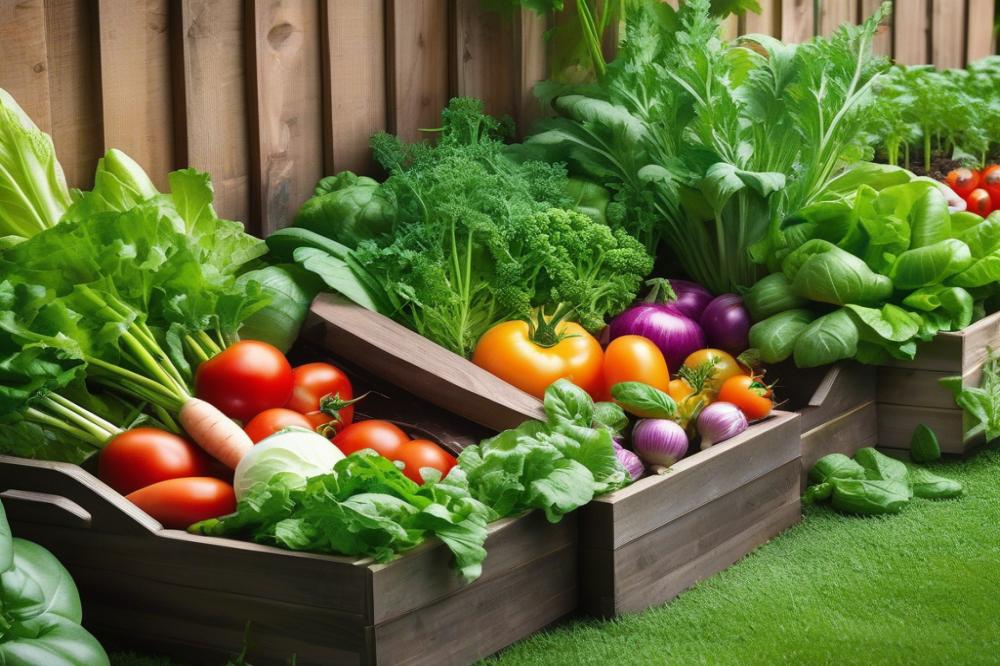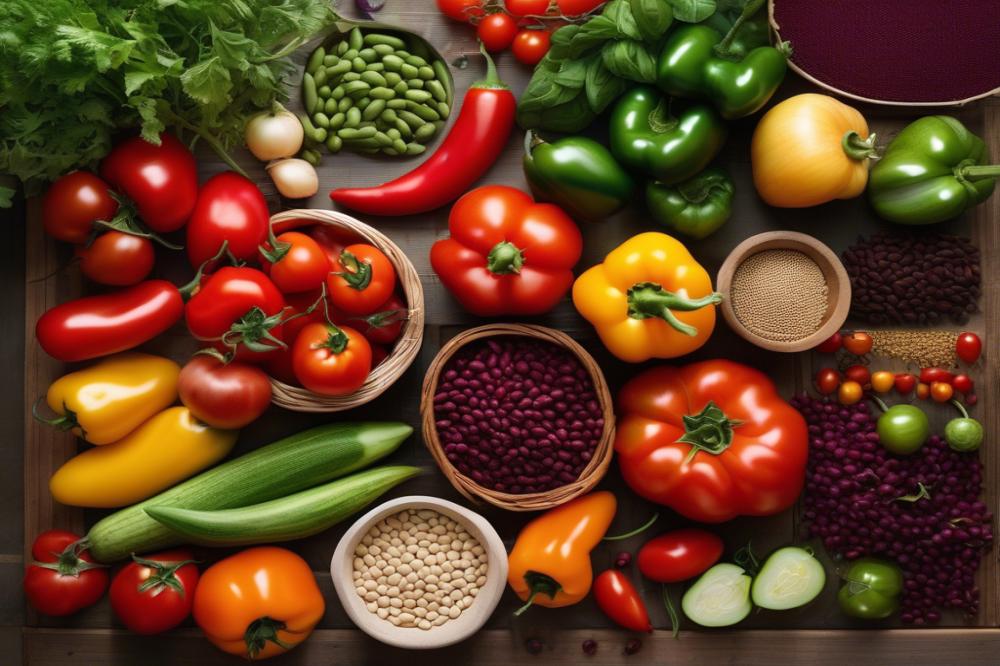Introduction
Growing tomatoes in your garden can be a rewarding experience. The sight of plump, juicy fruits hanging from lush green vines is something many gardeners cherish. However, one common problem that can ruin this perfect image is cracked tomato fruits. Understanding how to prevent and treat such issues is crucial for maintaining a healthy crop and ensuring beautiful harvests. Addressing this problem is not just about aesthetics; it also impacts the quality and taste of your tomatoes.
Cracking can happen due to various factors, often related to changes in water supply, temperature, or nutrition. As tomatoes grow, they need consistent moisture to develop properly. When plants receive too much water suddenly, for instance after a dry spell, fruits can swell too quickly, causing them to split. Temperature fluctuations can also play a significant role. Large differences in day and night temperatures may stress the fruits, leading to cracking. Understanding these factors can help you take action before damage occurs.
Many gardeners face these challenges, and it’s essential to recognize the signs early on. Taking steps to manage your watering practices and creating a balanced nutrient regimen can go a long way. These preventative measures serve as a solid foundation for thriving plants and delicious fruits. When cracks do appear, knowing how to tackle them promptly can salvage your crop and enhance your gardening experience. For further information, consult resources that offer valuable tips on maintaining healthy tomato plants, like #anchor_text_1#. With some care and attention, you can minimize the risk of cracked fruits while enjoying the delightful process of gardening. Explore strategies for maintaining consistent conditions, as outlined in #anchor_text_2# to better protect your harvest.
Understanding Cracked Tomato Fruits


Cracked tomato fruits refer to those tomatoes that develop physical splits in their skin. These cracks can vary in appearance and can happen for several reasons. They affect the fruit’s look and texture, making them less appealing.
Two common types of cracks are radial and concentric. Radial cracks run from the stem end down toward the bottom. They often start at the top of the tomato and extend outward. Concentric cracks create circular patterns around the fruit. These typically form in a ring-like pattern near the top. Each type of crack has its own causes and effects on the tomato.
Environmental factors play a crucial role in the cracking of tomatoes. For instance, rapid changes in moisture levels can lead to stress on the fruit’s skin. Heavy rain followed by dry weather accelerates this process. When the plant absorbs water too quickly, the skin might not keep up with the growing fruit inside. Changing temperatures also contribute. Fluctuations between hot days and cooler nights can increase the risk of cracking.
Additionally, the variety of the tomato influences its susceptibility to damage. Some types are more prone to cracking than others. Careful consideration of these factors can help gardeners make better choices for their crops. Understanding the signs early on can lead to better management practices and protect the fruit from these physical disruptions.
Factors Contributing to Cracked Tomato Fruits


Water stress is a significant factor in the cracking of tomato fruits. When plants experience inconsistent watering, they cannot take up water properly. This can cause rapid swelling of the fruit after a dry period. As a result, cracks often form on the surface. Proper watering practices can help minimize these stresses.
Nutrition plays a crucial role too. Excess nitrogen in the soil can lead to lush, rapid growth. While this might sound good, it can make the fruit more prone to splitting. Balanced fertilizers are key in maintaining healthy tomato plants without creating overly large fruits that are at risk.
Temperature fluctuations can also contribute to this problem. Hot days followed by cool nights create stress for the plants. Such extreme changes lead to rapid growth of the fruit during warm spells. Consequently, when the temperature drops suddenly, the fruits may split open. Adequate monitoring of the weather can help gardeners prepare for these shifts.
Sunlight exposure is another element that affects fruit integrity. Tomatoes require sun, but too much can lead to overheating. When fruits become too hot, they can crack under pressure. It’s important to provide some shade during the peak sunlight hours, especially in hotter climates.
Not all tomato varieties are created equal in terms of cracking. Some are naturally more resistant, while others may quickly show signs of damage. Choosing the right type can make a significant difference in your harvest. Researching varieties suited to your local climate is essential for success.
Preventive Measures for Cracked Tomato Fruits


Watering techniques play a crucial role in preventing cracks. Consistent moisture helps tomatoes avoid stress. Fluctuations in soil moisture can trigger swelling and cracking. Regularly watering your plants, especially during dry spells, is essential. Aim for deep watering that soaks the soil but does not create pooling.
Using mulch is a helpful strategy to retain soil moisture. A layer of organic material, like straw or wood chips, can help keep the ground damp. This reduces evaporation and stabilizes soil temperature. Alongside, mulch also suppresses weeds that compete for water and nutrients.
Balanced fertilization is important for robust plant health. Excessive nitrogen can lead to rapid growth, resulting in weak skins that crack easily. Opt for fertilizers that contain a mix of nutrients, including potassium and phosphorus. These encourage strong tissue development in tomatoes.
Choosing varieties with crack-resistant characteristics can yield better results. Some tomatoes are bred specifically to withstand environmental stress. Research and select seeds known for their durability. This unique selection aids in producing healthier fruit.
Adjusting planting techniques will also bring benefits. Providing adequate spacing allows for better air circulation. Good airflow reduces humidity around the plants, decreasing the chance of damage. Aim for at least 24 to 36 inches between your tomato plants. Adequate room is vital for strong growth and fruit development.
Treating Cracked Tomato Fruits
Handling cracked tomatoes requires care. When harvesting, avoid squeezing the fruits. Pick them gently to prevent further injuries. Use scissors or pruners to snip the stems instead of pulling them. This technique helps minimize stress on the fruit and reduces the chance of more cracks developing.
Storage plays a crucial role in maintaining the quality of cracked tomatoes. They should be placed in a single layer on a soft surface, like a towel or a cardboard box. Make sure they have enough space between them to avoid bruising. Keep them in a cool, dry place. This approach slows down deterioration and minimizes risks of additional damage.
Cracked tomatoes might not be suitable for fresh salads, but they have many other uses. Cooking is a great way to utilize these fruits. Sauces, soups, and salsas can benefit from the flavor of cracked tomatoes. You can even puree them for a tasty sauce base. This can be especially useful for home cooks looking to reduce food waste.
Knowing when to discard affected fruits is important. If the cracks are deep and the flesh appears mushy, it’s usually best to throw them away. Mold or unusual odors signal that the tomatoes are no longer safe to consume. Always prioritize safety when deciding what to keep and what to discard.
Monitoring and Maintaining Tomato Plants
Regular inspections of tomato plants play a crucial role in preventing issues like cracked fruits. Observing your plants weekly helps in spotting problems early on. Watch for signs such as wilting leaves or discoloration. These can indicate stress that may lead to cracking.
Adjusting care routines throughout the growing season is essential for healthy growth. Watering consistently is vital, especially during dry spells. Overwatering, however, can also cause issues. Finding the right balance is crucial for fruit development. Mulching around the base of the plants can help regulate soil moisture.
Responding promptly to sudden weather changes can make a significant difference. If a heatwave is forecasted, provide shade by using cloth or moving plants if they are in containers. On the other hand, if heavy rain is expected, improve drainage to prevent water from pooling around the roots. Both too much moisture and too little can lead to cracked tomato fruits.
Pay attention to your plant’s environment. Pest infestations or diseases may also contribute to stress. A holistic approach to caring for tomato plants often yields the best results. Keeping an eye on shifting conditions will make your gardening journey more successful.
Final Thoughts on Cracked Tomato Fruits
Preventing and treating cracked tomato fruits requires attention and effort. Gardeners can take several steps to maintain the health of their plants. Consistent watering helps in avoiding dramatic moisture changes. Mulching not only retains soil moisture but also helps regulate temperature. Furthermore, choosing the right tomato varieties can make a significant difference. Some breeds are more resistant to cracking than others.
When cracks do occur, a gentle approach to harvesting ensures that the fruit doesn’t suffer further damage. Using proper gardening techniques minimizes the risk of splits. Always remove fruits that show signs of severe cracking to prevent disease spread to other healthy tomatoes. Proactive practices can save a gardener from disappointment and enhance the overall yield.
Experimenting with different methods can lead to a better understanding of what works best for your garden. Take the time to reflect on your successes and challenges. This journey of learning can be enjoyable and rewarding. Growing tomatoes offers a delightful connection to nature, and overcoming the issue of cracking only deepens this bond.
As you cultivate your plants, remember the joy that comes with gardening. Celebrate every ripe tomato and relish the process. It’s all about the experience, whether you face challenges like #anchor_text_3# or glorious successes with your harvest. With perseverance and curiosity, maintaining the health of your crops can become a fulfilling part of your outdoor routine. Don’t hesitate to explore #anchor_text_4#, as it may lead you to new discoveries in your gardening adventure.



